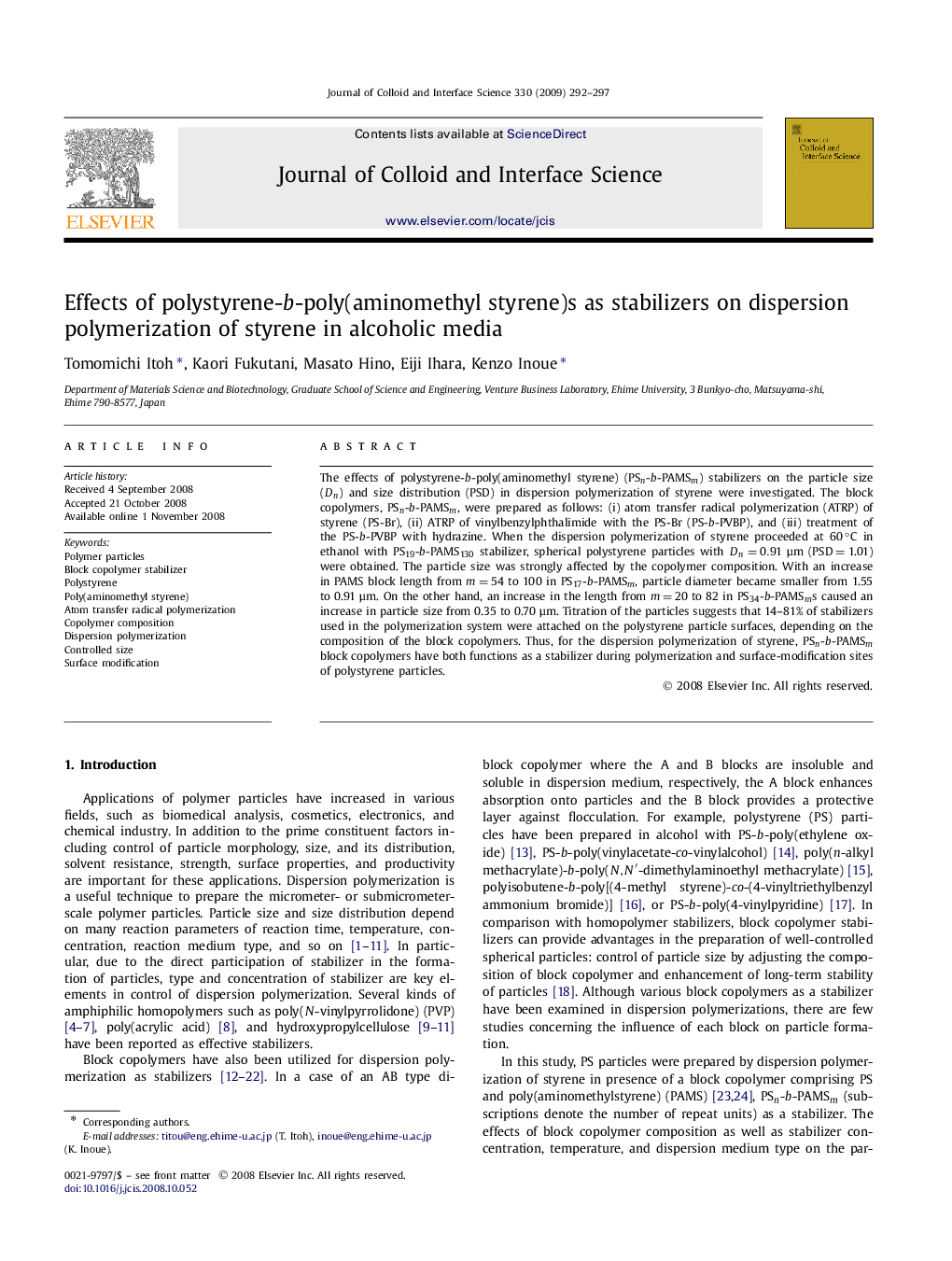| Article ID | Journal | Published Year | Pages | File Type |
|---|---|---|---|---|
| 610580 | Journal of Colloid and Interface Science | 2009 | 6 Pages |
The effects of polystyrene-b-poly(aminomethyl styrene) (PSn-b-PAMSm) stabilizers on the particle size (DnDn) and size distribution (PSD) in dispersion polymerization of styrene were investigated. The block copolymers, PSn-b-PAMSm, were prepared as follows: (i) atom transfer radical polymerization (ATRP) of styrene (PS-Br), (ii) ATRP of vinylbenzylphthalimide with the PS-Br (PS-b-PVBP), and (iii) treatment of the PS-b-PVBP with hydrazine. When the dispersion polymerization of styrene proceeded at 60 °C in ethanol with PS19-b-PAMS130 stabilizer, spherical polystyrene particles with Dn=0.91 μmDn=0.91 μm (PSD = 1.01) were obtained. The particle size was strongly affected by the copolymer composition. With an increase in PAMS block length from m=54m=54 to 100 in PS17-b-PAMSm, particle diameter became smaller from 1.55 to 0.91 μm. On the other hand, an increase in the length from m=20m=20 to 82 in PS34-b-PAMSms caused an increase in particle size from 0.35 to 0.70 μm. Titration of the particles suggests that 14–81% of stabilizers used in the polymerization system were attached on the polystyrene particle surfaces, depending on the composition of the block copolymers. Thus, for the dispersion polymerization of styrene, PSn-b-PAMSm block copolymers have both functions as a stabilizer during polymerization and surface-modification sites of polystyrene particles.
Graphical abstractSize and surface properties of polystyrene particles prepared by dispersion polymerization of styrene in the presence of polystyrene-b-poly(aminomethyl styrene) block copolymers as stabilizers are discussed.Figure optionsDownload full-size imageDownload as PowerPoint slide
